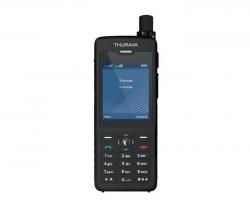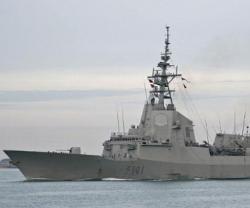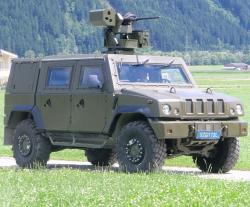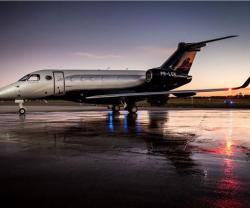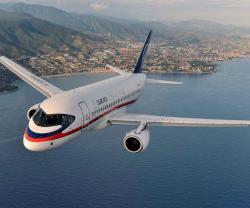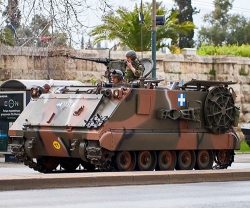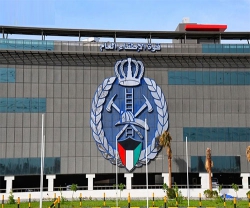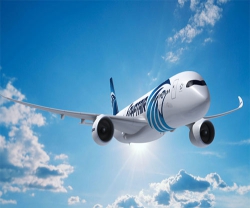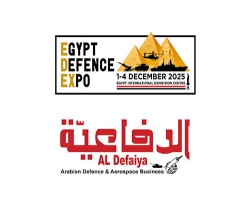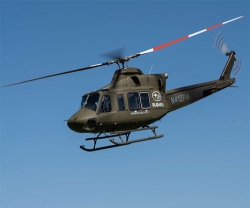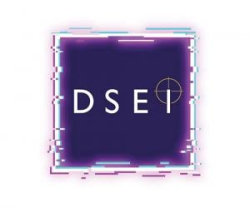Indra Develops CBRN Recognition Vehicle
18.03.2013 Products
Indra has completed the development of a vehicle for recognizing Chemical, Biological, Radiological and Nuclear threats, in addition to improvised explosives (NRBCe).
The system allows specialized staff to travel to contaminated areas so they may perform tasks for detecting and identifying possible contaminant agents in safe conditions. This R&D project has been backed by the CDTI.
Using a commercial van as the platform, Indra has created a secure work area for two operators, an operations chief and the driver. The vehicle is pressurized, and in the event of an accident that affects its habitability, an oxygen mask system connected to the filtering device makes it possible to breathe clean air.
Operators have access to a measurement and gamma spectroscopy system as well as a system for sampling suspended particles in order to detect nuclear and radiological materials. In order to attach the system to the vehicle, an ad hoc design has been created. In addition, for their safety, technicians also carry an individual dosimeter that alerts them if radiation levels could present a danger.
They also have a system for detecting and identifying local chemical compounds as well as another for remotely detecting contaminant clouds that reaches distances of up to five kilometers. The vehicle is also equipped with a device for identifying chemicals using mass spectrometry.
In terms of biological analyses, the platform has a detection and sampling system. In the area of detecting explosives, it includes a portable LIBS spectroscopy system, which is a technology that uses a highly energetic laser for detecting explosive reside in traces of only a few nanograms.
All the data gathered by the various devices is centralized in the information management system (LIMS) carried by the vehicle and then sent to the control centre using the most convenient link (Satcom, Tetra, etc.).
In addition, the vehicle has an application for monitoring contaminant agents in real time and georeferencing them. The information collected is combined with data provided by a meteorological unit. This system enables performing an initial estimate as to in what direction and at what speed the agent is spreading.
Operators have access to self-contained breathing equipment as well as A-level protection gear for performing tasks outside of the vehicle. This allows them to collect samples by foot and mark the contaminated area. All these features make this vehicle one of the most advanced systems available on the civil market. It can also be adapted easily to be used by Armed Forces by making slight changes in the vehicle characteristics.
The system allows specialized staff to travel to contaminated areas so they may perform tasks for detecting and identifying possible contaminant agents in safe conditions. This R&D project has been backed by the CDTI.
Using a commercial van as the platform, Indra has created a secure work area for two operators, an operations chief and the driver. The vehicle is pressurized, and in the event of an accident that affects its habitability, an oxygen mask system connected to the filtering device makes it possible to breathe clean air.
Operators have access to a measurement and gamma spectroscopy system as well as a system for sampling suspended particles in order to detect nuclear and radiological materials. In order to attach the system to the vehicle, an ad hoc design has been created. In addition, for their safety, technicians also carry an individual dosimeter that alerts them if radiation levels could present a danger.
They also have a system for detecting and identifying local chemical compounds as well as another for remotely detecting contaminant clouds that reaches distances of up to five kilometers. The vehicle is also equipped with a device for identifying chemicals using mass spectrometry.
In terms of biological analyses, the platform has a detection and sampling system. In the area of detecting explosives, it includes a portable LIBS spectroscopy system, which is a technology that uses a highly energetic laser for detecting explosive reside in traces of only a few nanograms.
All the data gathered by the various devices is centralized in the information management system (LIMS) carried by the vehicle and then sent to the control centre using the most convenient link (Satcom, Tetra, etc.).
In addition, the vehicle has an application for monitoring contaminant agents in real time and georeferencing them. The information collected is combined with data provided by a meteorological unit. This system enables performing an initial estimate as to in what direction and at what speed the agent is spreading.
Operators have access to self-contained breathing equipment as well as A-level protection gear for performing tasks outside of the vehicle. This allows them to collect samples by foot and mark the contaminated area. All these features make this vehicle one of the most advanced systems available on the civil market. It can also be adapted easily to be used by Armed Forces by making slight changes in the vehicle characteristics.
Previous PostCassidian Develops New-Generation Jamming System
Latest news
Latest events
DefenPol China2025 - 7th Guangzhou International Defense & Police Exhibition & Summit
11 - 12 Jul 2025Nan Fung International Convention & Exhibition Center (NICEC) - ChinaIDEF 2025 Turkey - International Defence Industry Fair
22 - 27 Jul 2025Istanbul Expo Center - TurkeyDSEI 2025
09 - 12 Sep 2025Excel, London - United KingdomIntersec Saudi Arabia
30 Sep - 02 Oct 2025Riyadh International Exhibition & Convention Centre - Saudi Arabia


